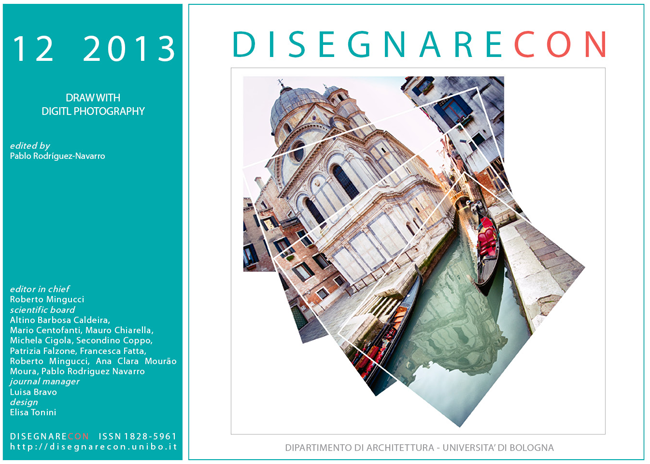Before the “no photoscannig” sign to appear: reflections on photomodelling
DOI:
https://doi.org/10.6092/issn.1828-5961/3876Keywords:
rilievo fotografico, 3D, structure from motionAbstract
Today it is possible to easily access advanced equipement both for 3d and photographic scanning, but in this field it can often happen to acquire the data using emergency procedures. In this case the improvisation can become essential: if we cannot be provided specialized equipment, or if we need to work only partially officially, simply for the lack of authorization, or because during a visit we find an interesting theme. Evaluating several experiences, it can be useful to understand the limits and advantages of the procedure. This contribution has not the aim to presenting itself as a collection of indications for illegal reliefs, but to be useful in an analysis and to explain the limits and advantages in this low cost procedure, giving the indications to work effectively in emergency and adverse conditions.
References
Guidi G., Russo M., Beraldin J.A., (2010), Acquisizione 3D e modellazione poligonale, McGraw-Hill Companies
Egels Y., Kasser M., (2010), Digital Photogrammetry, CRC Press
Kraus K., (2007), Photogrammetry: Geometry from Images and Laser Scans, Volume 1, Walter de Gruyter
Micheletti A., (2010), iPhone Photography & Video For Dummies, John Wiley & Sons
Remondino F., El-Hakim S., (2006), Image-based 3D Modelling: A Review. The Photogrammetric Record, 21: 269–291
Rodriguez-Navarro, Pablo (2012), Automated Digital Photogrammetry versus the systems based on active 3D sensors. La Fotogrametría Digital Automatizada frente a los sistemas basados en sensores 3D activos, in EGA, 17(20), pp. 100-111
Verdiani G. (editor), (2012), Il ritorno all'immagine, nuove procedure image based per il Cultural Heritage, lulu.com
Von Gruber O., (1932), Photogrammetry: collected lectures and essays,Chapman & Hall
Downloads
Published
How to Cite
Issue
Section
License
Copyright (c) 2013 Mirco Pucci





